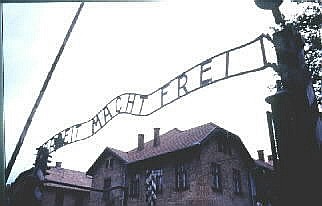
Sign over the entrance to the camp.
"Arbeit Macht Frei" translates as "Work Makes You Free"
Auschwitz I Concentration Camp,
Oswiecim, Poland
(all photographs by J. Gerencher)
In 1939, the Germany defeated Poland in a quick military campaign and
occupied the region which included the rural Polish town of Oswiecim, which they
renamed Auschwitz. A former Polish army camp there was converted into a
prison camp, named KL Auschwitz, and received its first inmates in June of
1940. Prison labor was used to expand the original 20 buildings, most of
which were one-story, into two-story structures, and to build 8 additional
buildings for use as prison blocks. The entire compound was located behind
a tall brick wall.
The average number of prisoners within Auschwitz fluctuated between 13,000 to
16,000, and in 1942 reached a record 20,000. In 1941, construction of a
second and larger camp, called "Auschwitz II - Birkenau," was begun on the
site of the rural
farming village of Brzezinka, which is located only 3 kilometers away.
Additional expansion of the camp system in the region produced many satellite
camps to provide slave labor to the mines and industries of the region.

Sign over the entrance to the camp.
"Arbeit Macht Frei" translates as "Work Makes You Free"

Prison blocks along main avenue.
The facility was originally a Polish army camp.
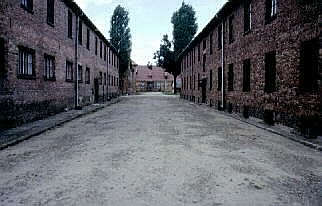
Courtyard between cell blocks.
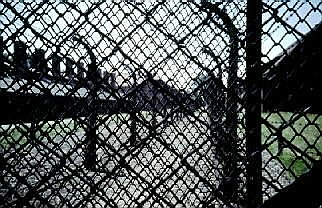
Fencing separating areas within the prison.
Chimneys to the left are part of kitchen.
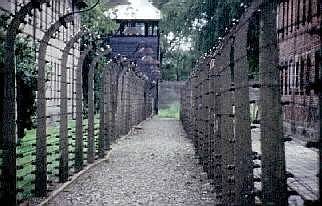
Paired electrified barbed-wire fences with guard tower.
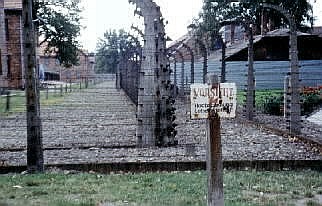
Warning sign for paired electrified barbed-wire fences.
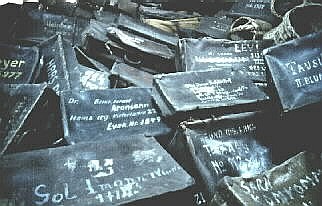
Labeled suitcases from unloaded transports of victims.
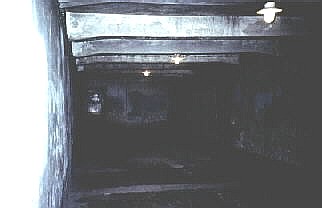
Interior of gas chamber.
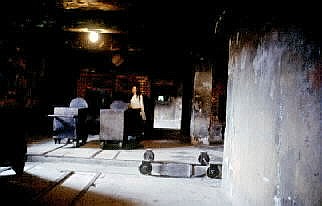
Rail system for efficiently feeding bodies into ovens.
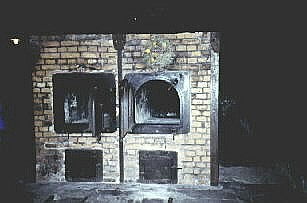
Ovens used to consume bodies.
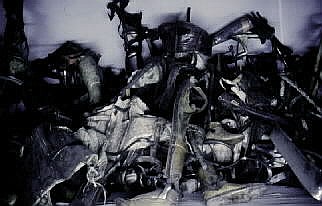
Artificial limbs from murdered victims.

Human hair and cloth made from human hair.
Liberating Russian soldiers discovered 7 tons of human hair
in warehouses near the camp,
although retreating Germans burned most warehouses.
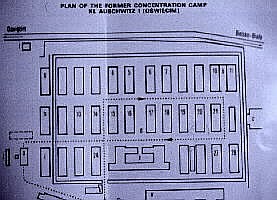
Map showing layout of the Auschwitz camp.
Note the wall surrounding the camp.